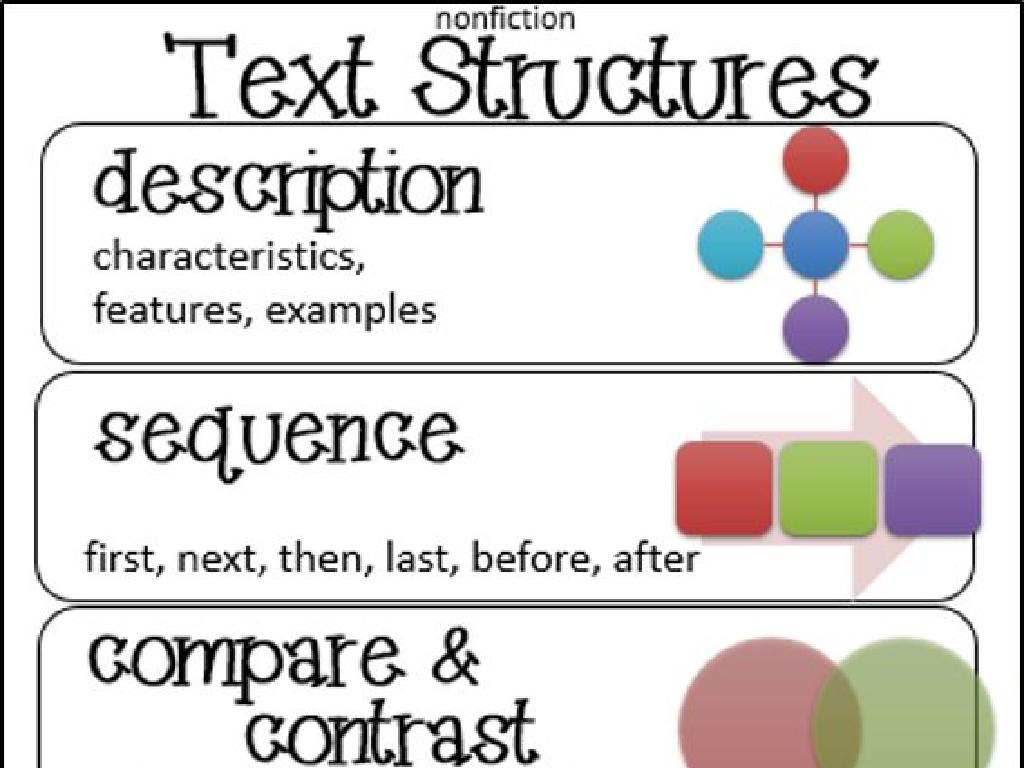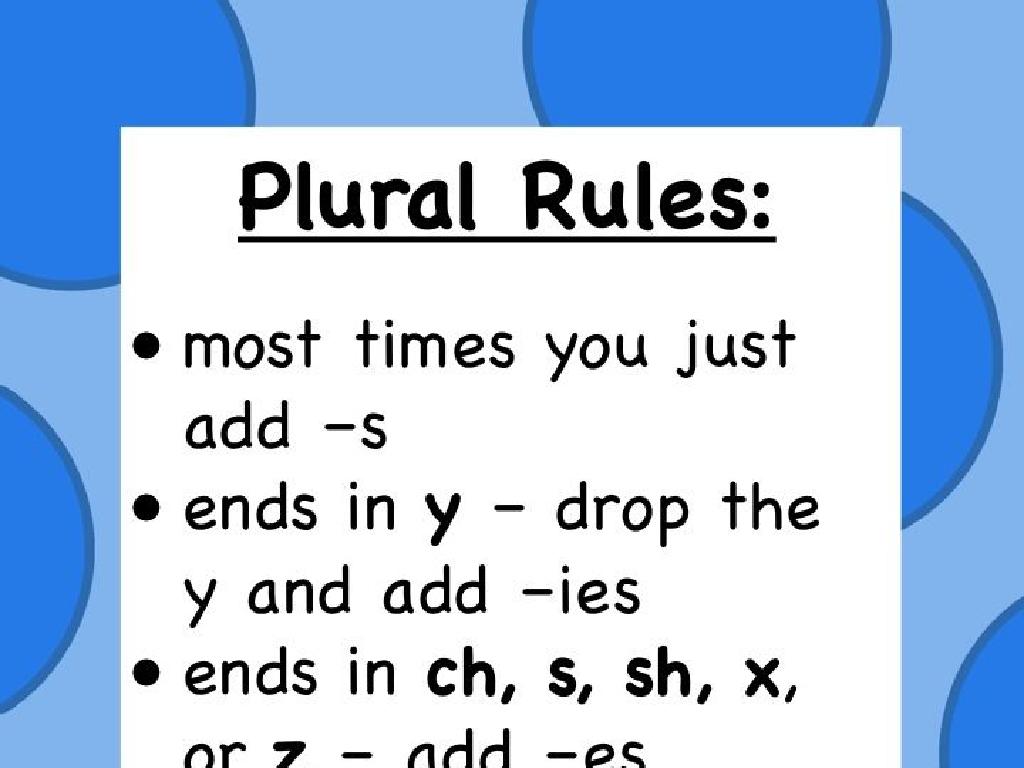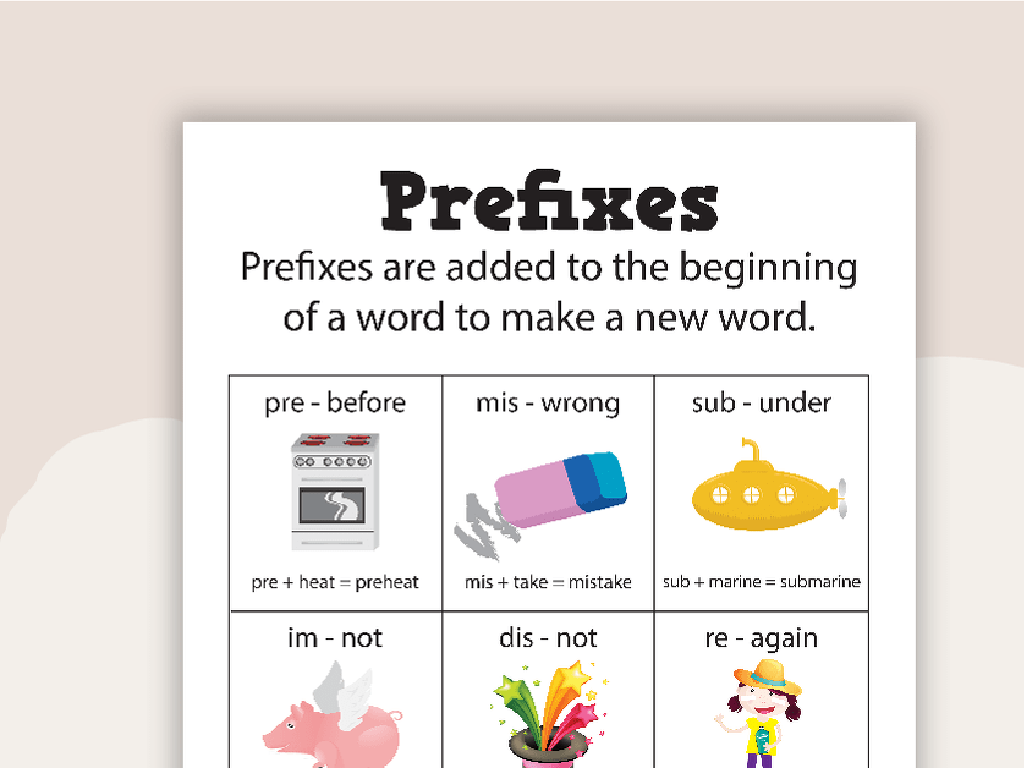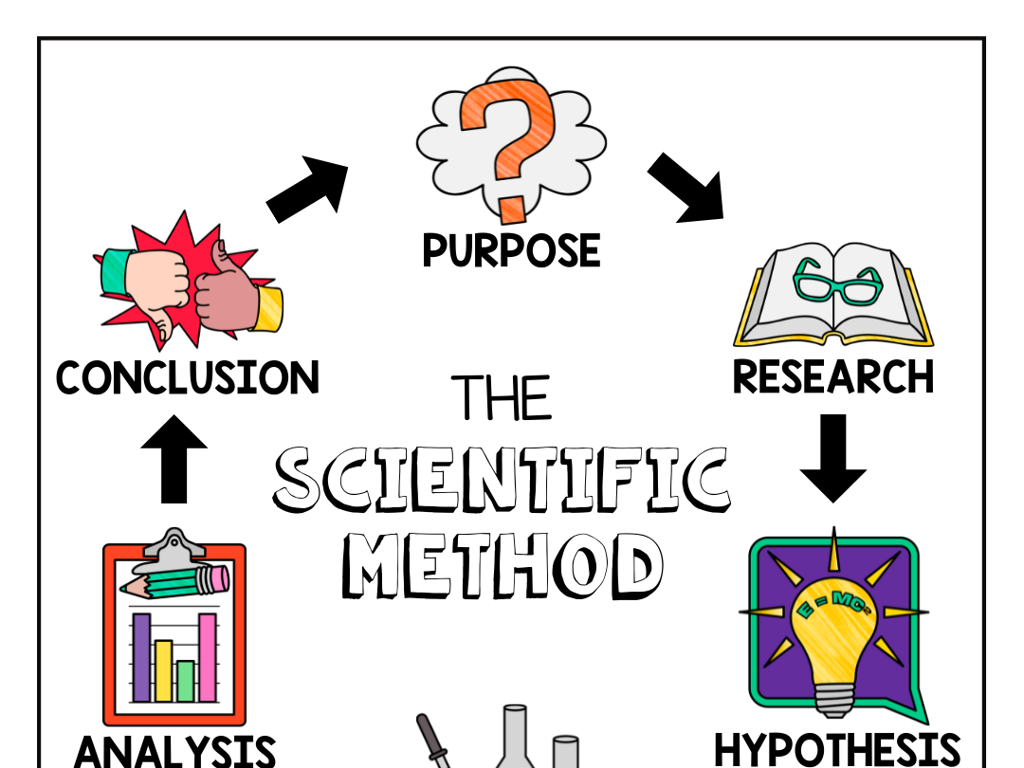Classify Elementary Substances And Compounds Using Models
Subject: Science
Grade: Sixth grade
Topic: Atoms And Molecules
Please LOG IN to download the presentation. Access is available to registered users only.
View More Content
Welcome to Atoms and Molecules!
– Atoms: The tiny units
Atoms are the smallest units of matter that retain the properties of an element.
– Molecules: Atoms join hands
When atoms link together, they form molecules, which are the smallest units of compounds.
– Atoms make up elements
Each element on the periodic table is made of one kind of atom, like oxygen or hydrogen.
– Molecules form compounds
Compounds are substances formed when two or more different types of atoms bond together.
|
This slide introduces the fundamental concepts of atoms and molecules to sixth-grade students. Begin by explaining that atoms are the basic building blocks of all matter, and they combine in various ways to form everything in the universe. Emphasize that while atoms are the smallest unit of an element that maintains the element’s properties, molecules are groups of atoms bonded together, representing the smallest unit of a compound with the compound’s properties. Use simple diagrams to illustrate the structure of atoms and molecules. Encourage students to think of molecules like LEGO structures, built from smaller pieces (atoms). This analogy helps them visualize how different combinations of atoms create different substances.
Atoms: The Building Blocks of Matter
– What is an atom?
– The smallest unit of an element, indivisible by chemical means.
– Meet the subatomic particles
– Protons (+ charge), Neutrons (neutral), Electrons (- charge) make up atoms.
– Exploring the atom’s nucleus
– The nucleus is the core, holding protons and neutrons, with electrons orbiting.
– Atoms in substances and compounds
– Atoms bond to form substances; different atoms form compounds.
|
This slide introduces the concept of atoms as the fundamental units of matter. Begin by defining an atom and its significance in the study of science. Discuss the three subatomic particles – protons, neutrons, and electrons – their charges, and their roles within the atom. Emphasize the nucleus as the central part of the atom containing protons and neutrons, with electrons moving around it. Finally, explain how atoms combine to form elementary substances and how different atoms can bond to form compounds, setting the stage for understanding molecular models in subsequent lessons.
Molecules: When Atoms Join Together
– Atoms bonding into molecules
– Atoms share or exchange electrons to form bonds, creating molecules.
– H2O: A molecule of water
– Two hydrogen atoms bond with one oxygen atom to form water.
– O2: A molecule of oxygen
– Two oxygen atoms bond together to form oxygen gas, essential for breathing.
– N2: A molecule of nitrogen
– Two nitrogen atoms bond to form nitrogen gas, making up 78% of Earth’s atmosphere.
|
This slide introduces the concept of molecules, which are formed when two or more atoms bond together. Emphasize the importance of electron sharing or exchange in the formation of molecular bonds. Use water (H2O) as a relatable example, explaining how hydrogen and oxygen atoms bond. Discuss oxygen (O2) as the molecule we breathe and nitrogen (N2) as the most abundant gas in the atmosphere. Encourage students to visualize molecules by drawing or using models, and explain that understanding these simple molecules is the foundation for exploring more complex compounds in future lessons.
Classifying Elementary Substances
– Define elementary substances
– Pure chemical substances made of single type of atom
– Examples: Fe, O2, Au
– Iron (Fe) is a metal, Oxygen (O2) is a gas, Gold (Au) is a precious metal
– Properties of substances
– They have unique physical and chemical properties
– Using models in classification
– Models help visualize atoms and their interactions
|
Elementary substances are pure chemical substances that consist of a single type of atom. Examples include metals like Iron (Fe) and precious metals like Gold (Au), as well as nonmetals like Oxygen (O2). Each elementary substance has unique physical and chemical properties that can be identified and studied. In class, we’ll use models to help students visualize the atomic structure of these substances and understand how their properties arise from the arrangement of atoms. Encourage students to think about the practical applications of these substances in everyday life and how their properties make them suitable for different uses.
Compounds: A New Identity
– How compounds form
– Atoms join to create compounds with new properties
– Traits of compounds
– Compounds have unique characteristics different from original elements
– Water (H2O) as a compound
– H2O: Two hydrogen atoms bond with one oxygen atom
– Carbon Dioxide (CO2) as a compound
– CO2: One carbon atom bonds with two oxygen atoms
|
This slide introduces the concept of compounds in chemistry. Compounds are substances formed when two or more elements are chemically bonded together, resulting in a material with new properties. For example, water is a compound made of hydrogen and oxygen, and it has different characteristics than either element alone. Similarly, carbon dioxide is a compound composed of carbon and oxygen. It’s important for students to understand that compounds have unique properties that are distinct from the elements that form them. Use models to show how atoms bond to form compounds, and discuss how the properties of compounds are useful in everyday life.
Classifying Substances with Models
– Models help visualize atoms
– Atoms are tiny particles making up everything
– Ball-and-stick models show bonds
– Balls represent atoms; sticks are bonds between them
– Space-filling models show space
– These models display how atoms fill space in a substance
– Practice classifying substances
|
This slide introduces students to the concept of using models to understand the structure of atoms and molecules, which are too small to see with the naked eye. Ball-and-stick models are useful for showing how atoms bond together to form molecules, with ‘balls’ representing atoms and ‘sticks’ as the bonds. Space-filling models, on the other hand, are used to represent how atoms occupy space in a solid, liquid, or gas. Encourage students to practice using these models to classify different substances as either elementary (single type of atom) or compounds (two or more types of atoms bonded together). Provide examples of each and have students create their own models with classroom materials.
Class Activity: Build Your Own Molecule!
– Create water & CO2 models
– Identify elements in each
– H2O has hydrogen & oxygen; CO2 has carbon & oxygen
– Discuss the compounds formed
– Water is H2O, a compound; CO2 is carbon dioxide, another compound
– Share models with the class
|
This interactive class activity is designed to help students understand the composition and structure of molecules. Students will create physical models of water (H2O) and carbon dioxide (CO2) using materials like beads or marshmallows and sticks. They will identify the elements involved in each molecule and discuss the concept of compounds. After constructing their models, students will share their work with the class, explaining the structure of the molecules they built. This hands-on experience reinforces the lesson on elementary substances and compounds and encourages peer learning. Possible materials for the activity include colored marshmallows (to represent different elements) and toothpicks (to represent bonds).
Review: Substances and Compounds
– Recap elementary substances
– Elementary substances consist of a single type of atom
– Discuss compound models
– Compounds are formed by two or more different atoms bonded together
– Open floor for questions
– Address any confusions
– Ensure understanding before moving on
|
Begin the slide by summarizing the key points about elementary substances, which are pure chemical substances made of only one type of atom. Then, explain how compounds are different, being made up of two or more different atoms bonded together. Use models to illustrate the structure of simple compounds. Open the floor for students to ask questions about anything they’re unsure of, and take the time to clarify any points of confusion. This interactive session will help reinforce their understanding and clear up any misconceptions before proceeding with the lesson. It’s also an opportunity to assess their grasp of the material covered so far.
Homework: Elements & Compounds in Daily Life
– Research an element
– Pick any element from the periodic table
– Explore a compound
– Choose a compound like water (H2O) or carbon dioxide (CO2)
– Document everyday uses
– How are they used in cooking, cleaning, or technology?
– Get ready to present
|
This homework assignment is designed to help students apply their knowledge of elements and compounds to the real world. They should select one element and one compound, research their properties, and find out how they are used in everyday life. This could include elements like carbon in pencils or oxygen we breathe, and compounds such as water or table salt. Encourage students to look for interesting and relatable uses that will engage their peers. In the next class, students will have the opportunity to share their findings, enhancing their public speaking skills and reinforcing their understanding of the topic.






